How to make a sheet with an elastic band from an ordinary sheet?
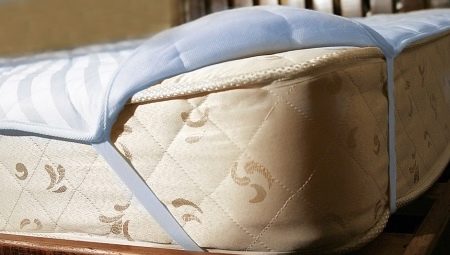
Who hasn’t been faced with a sheet rolling off a mattress, with the need to straighten it in the middle of the night? The problem is familiar to everyone, and today we will talk about how to get rid of the annoying folds of a loose sheet once and for all, even without having the professional skills of a tailor.
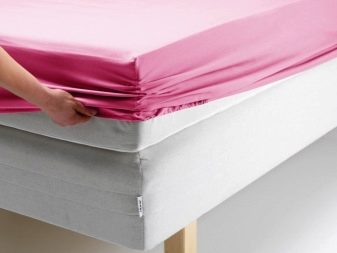
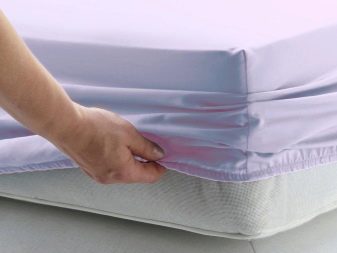
Tools and materials
Bed linens made according to Soviet standards, which are still quite common in the sewing industry, are not suitable for European-sized beds. It is not enough for them. This happens due to the fact that the height of the mattress, made according to European standards, significantly exceeds the Russian models. In this regard, a sheet with an elastic band helps out, it is very convenient to use. Such a model does not roll into a heap while sleeping, protects the mattress from all sides from contamination. It is not always possible to buy a suitable model in a store, but you can always sew it yourself.
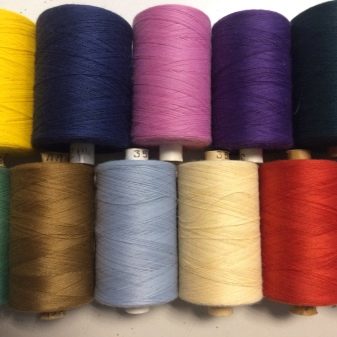
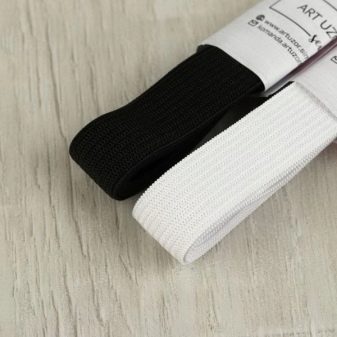
Undoubtedly, besides the use of an elastic band, there are other ways to secure the sheet to the mattress. For example, to pin it to the corners of the mattress with pins, but this is unsafe - with this method there is a risk of ruining the mattress and pricking itself during sleep if the pin suddenly comes unfastened. Sometimes a layer of hard material is used under the sheet, but few people agree to this, it's too uncomfortable and uncomfortable.
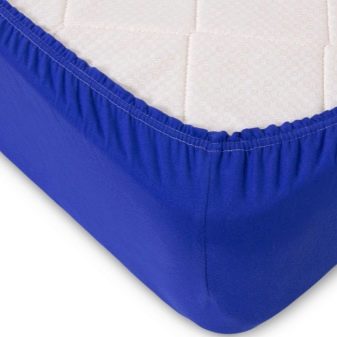
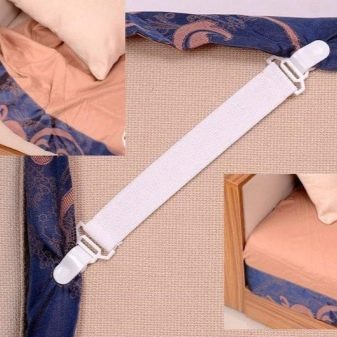
Sometimes clasps are sewn on - devices resembling suspenders. They are attached to the sheet from the seamy side of the mattress. With their help, you can perfectly pull the sheet. Manufacturers offer angular and transverse models, but this is a more technologically advanced method and such a device is not always at hand.This is a rather specific kind of fittings, so it is easier to sew a stretch sheet with an elastic band.
This will require tools, accessories and fabric.
-
threads;
-
scissors;
-
durable elastic band;
-
tape measure;
-
several safety pins;
-
a piece of fabric or a finished sheet;
-
and finally, the main tool is the sewing machine.
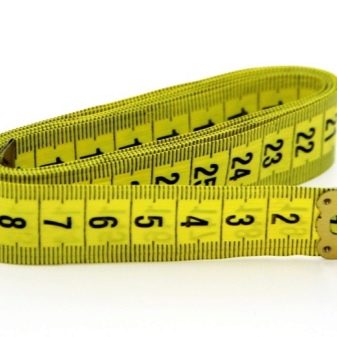
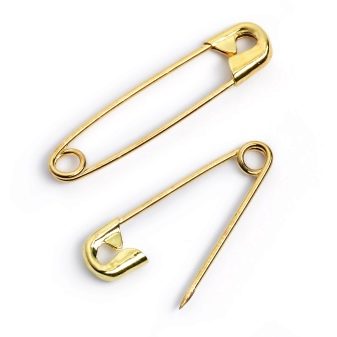
As a rule, they use knitted or satin fabric - thin elastic fabrics take the shape of a mattress well, fit it tightly and create comfort in a sleeping place. The fabric for sleeping with the human body is in contact for a long time, so it is so important to choose a material that will not only be pleasant and comfortable, but also safe. The fabric should not contain harmful substances. These are the qualities that natural materials have:
-
linen;
-
silk;
-
cotton.
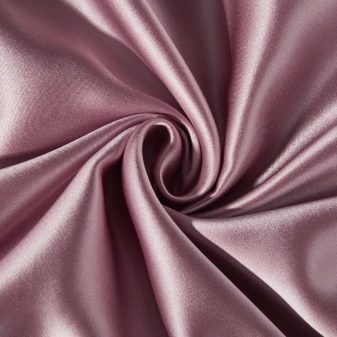
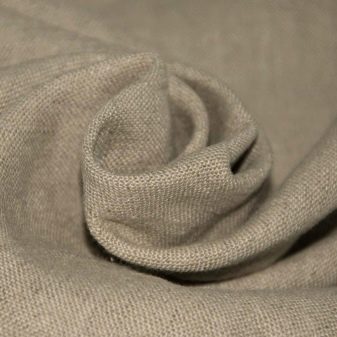
Cotton breathes well, is not prone to the formation of a greenhouse effect - in summer it keeps linen cool, warm in winter. It is easy to wash and iron. Linen has similar characteristics, but is coarser and difficult to iron. Silk is extremely pleasant in tactile sensation, beautiful, does not fade, does not fade, lasts a long time, but costs a lot. Natural fabrics have good air permeability, hygroscopicity, wear resistance, and ease of care.
Here are some basic tips for choosing a material.
-
To determine the quality of the fabric, you need to look at it in the light. With poor quality, structure heterogeneity is visible - gaps. Such material does not differ in strength; after several washes, the product will look worn out.
-
The smell is of no less importance - natural cotton has only a textile smell, without impregnations of foreign aromas. The smell of chemistry indicates the presence of harmful substances with dangerous negative consequences, for example, allergies.

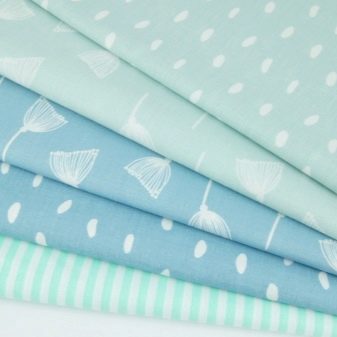
It is not worth stopping the choice on a material with a non-uniform surface - protruding threads, an untreated edge - such shortcomings have a bad effect on the appearance of bed linen.
For cotton fabrics, thin strong reinforced threads are used. They perfectly tolerate any number of washes. A good option is LH-45 or standard No. 40, available in any fabric store and even in household departments. The color must match the main background of the material.
Linen gum consumption is about 5 meters. The rubberized tape must contain latex thread, which makes it elastic, reliable, strong. In order to save material, you should choose an elastic band up to 3 centimeters wide, which will reduce the size of the hem allowances.
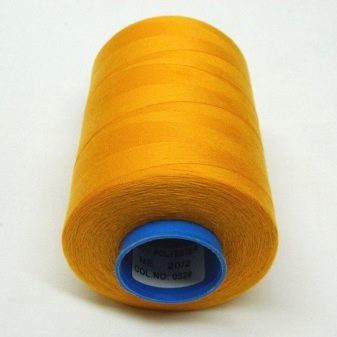
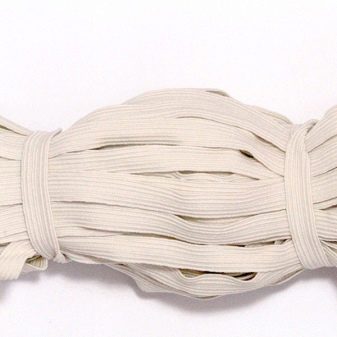
Stretch sheets do not form folds, stay flat even during restless sleep. You can sew not only from cotton and sateen, coarse calico is also an excellent material - wear-resistant, cheaper, and therefore profitable.
Pattern
Sewing a sheet in the form of a cover with an elastic band with your own hands is not difficult, but you will still need a pattern for this, especially if you do not have sewing skills. The main thing is to correctly calculate the dimensions of the future product. This can be done by operating with three values - width, length and height of the mattress for which the sheet is made.
A centimeter tape is the most convenient tool for measuring, but if it is not in the house, you can get by with a simple ruler, since all data is measured in a straight line.
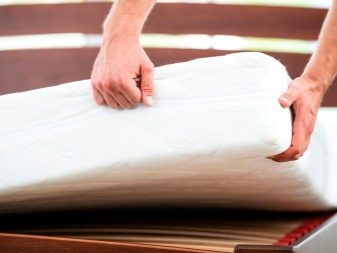
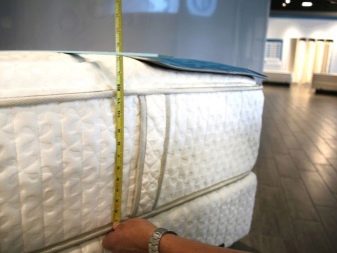
To perform an accurate calculation of the footage of the material for the sheet, proceed as follows: add the width and height of the mattress, and the height is multiplied by 2, taking into account the need to close the sidewalls.
Having received the initial numbers, increase them by 10-12 centimeters for each side - allowances for elastic and hemming of the sheet on the back of the mattress. We get the width of the pattern. The calculation of the length of the product is carried out using the same algorithm, with a small difference: the width is replaced by the length. As a result, the desired result will be obtained.
As you can see, the initial steps for calculating the necessary measurements are quite simple, it remains to prepare the pattern. Do not be intimidated by the resulting dimensions, imagining a gigantic drawing that is not only difficult to draw, but even find enough paper for it. All this is not required, it is enough to draw a drawing of the corner parts, cut it out and compare it with the base (mattress). For a clearer perception, you can connect the "seams" on the layout with tape and put it on the corner of the mattress. After trying on, the tape is simply cut.

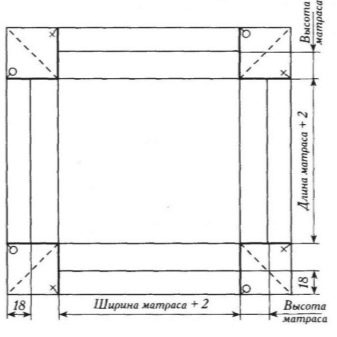
Considering that the most popular and at the same time the largest width is 220 cm, a one-piece sheet will only work for mattresses that do not exceed 140 cm in width. For more spacious models, you will have to build up the fabric. When performing the stages of making a pattern and the subsequent cutting of the material, you need to remember a few nuances that are important for the correct sewing of the product.
-
When starting to sew a sheet with an elastic band for a double bed, you must remember that the material will be less than the required width, which means that it will have to be added.
-
When extending, it is difficult to fit a flap with large prints or animal prints. To make the finished product look solid, professionally made, it is advisable to give preference to solid colors or small abstract patterns.
-
It is more correct to build up the fabric from the side of the headboard, where the pillows will close the connecting seam.

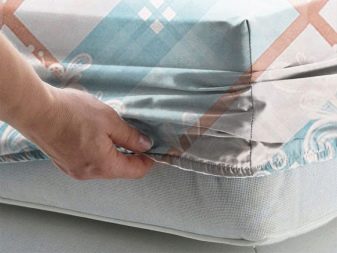
The pattern is applied from the wrong side of the material with a pencil or chalk; when cutting, you need to remember about the seam allowances.
Manufacturing options
After the pattern, tools and accessories are ready, it's time to start making the stretch sheet directly.
Attaching the elastic band
The resulting height of the mattress is measured along the outer edge of the material with 20 centimeters added to it, after which the pattern is applied to the corners, the prepared square is drawn, cut out, and the same is done with the rest of the corners.
-
The cut sides of the squares are folded right side in.
-
All corners are connected with a linen or stitch seam (the stitch will need to be processed on an overlock) on a sewing machine.
-
The turn of the rubberized tape comes - it is sewn around the entire perimeter or from the end sides. As a rule, a round elastic is sewn for small items - on a crib. For an adult option, it is best to hem with two pieces of elastic tape sewn in from the end sides. A sheet with an elastic band on both sides is much more comfortable. This makes it much easier to take care of the product, especially ironing, it is more convenient to fold and store it.
-
To calculate how long the elastic will be needed, you can use the formula (50 cm + mattress width + 50 cm), where 50 is the length of the elastic bend on the side of the mattress. For example: with a mattress width of 140 cm, it looks like this: 50 + 140 + 50 = 240 cm of elastic tape will be needed for the entire product. The result is divided by 2.
-
From each edge on the long side of the sheet, measure 50 cm and make a notch. This is the mark where the elastic ends.
-
The rubberized tape is laid from one notch to the other along the seamy side of the fabric. Fasten one end with several stitches, cover it with 2.5 cm of fabric in double fold - the same hem allowance. During sewing, the rubber must be evenly pulled and fastened again at the end of the seam. The opposite side of the sheet is also made out. When sewing in, make sure that the needle pierces the material next to the rubber, without touching it - if the braid is sewn "tightly", it cannot be replaced later without completely evaporating.
-
After the elastic tape is sewn on both sides, fold and hem the free sides of the sheet.
-
The seams on the finished product are carefully steamed and ironed, after which the entire product is smoothed and folded neatly.
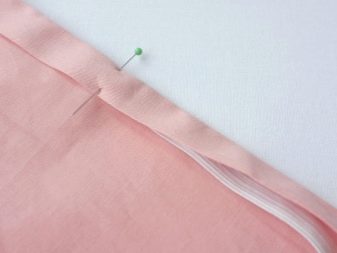
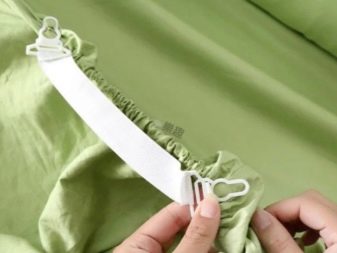
That, in fact, is all, the product is ready.Thus, you can sew a stretch sheet for mattresses of any size - the only difference is in numbers.
Now let's talk about how to sew a stretch product from a regular sheet. As it became clear from the above, a sheet with an elastic band will need much more material than an ordinary sheet. For manufacturing, you will have to take away a significant amount of length and width from the finished product. It follows from this that the result will be much smaller than the "source", or else you will have to build up the canvas.
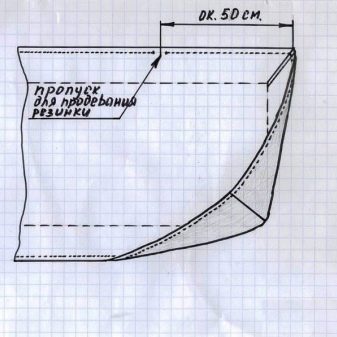
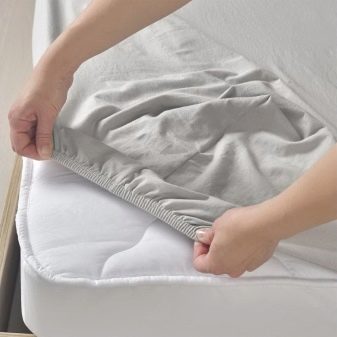
For example: a 1.5-bed model will come out of a double model. From a 1.5-bed room, only a sheet for a cot will turn out. In all other respects, the principle of operation is the same as when sewing from roll fabric.
With drawstring
This option is much simpler and suitable for beginners. All steps, before sewing in the elastic tape, are similar to those listed above. The algorithm of actions only changes when it comes to rubber. A drawstring is made around the perimeter of the sewn cover fabric: a seam with a double hem is laid at a distance of at least 1.5 cm from the edge. In this case, you need to leave a small area of 1.5-2 cm unstitched. The size of the rubber is calculated using the above formula. The result is not divided in two - the braid will be laid inside the drawstring along the entire perimeter of the sheet. One end of the rubberized tape is attached to a pin and pulled through the drawstring. After that, both ends of the rubber are sewn together, hidden inside and the remaining area is covered.
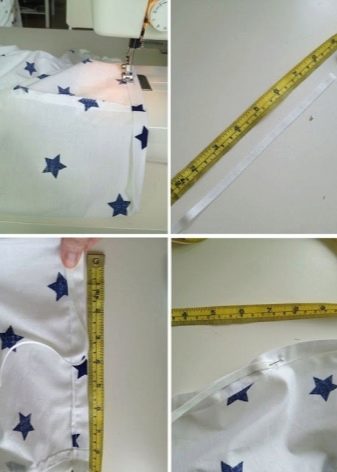
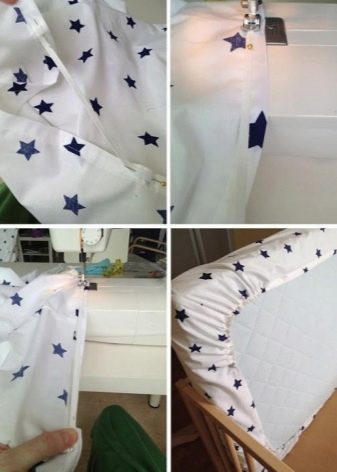
The finished product will once and for all save the wearer from problems with crumpled sheets and annoying folds under the body. If the house has a sewing machine, it's time to stop being nervous and get down to business - to sew a comfortable stretch sheet in a couple of hours. Following the advice received, everyone can cope with the task.
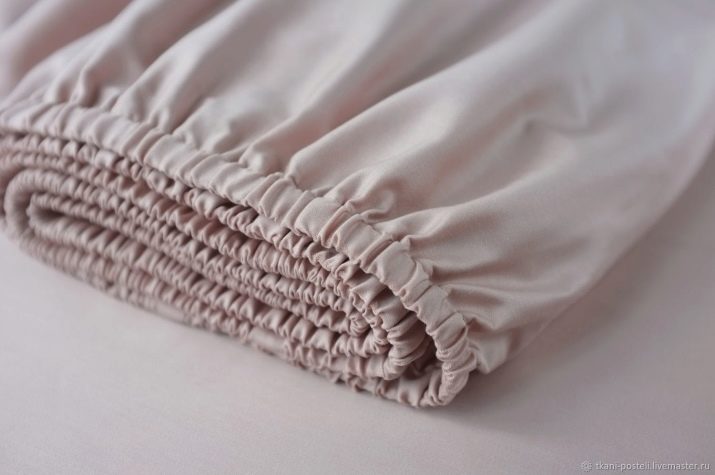
A few tips for handling the finished product.
Intensive washing in an automatic machine quickly renders even very dense elastic band unusable, but no one suggests washing by hand. Alternatively, you can use a water softener, such as fabric softener, with the powder.
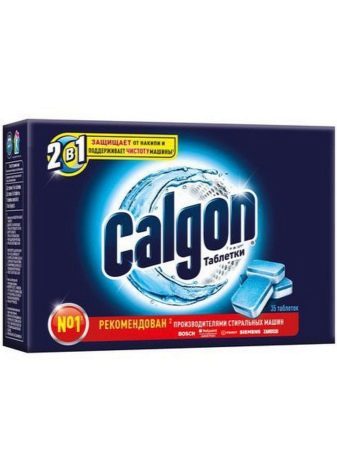

So that the sheet does not lose its beauty and quality for as long as possible, during ironing, do not forget about the choice of the most suitable temperature regime, and carefully pull the places that are difficult to iron on the rounded corner of the ironing board.
How to make a sheet with an elastic band, see the video below.








